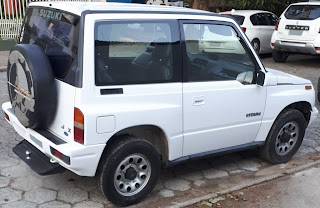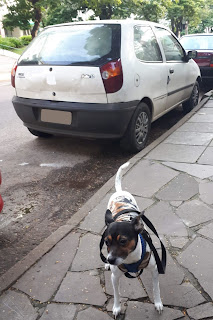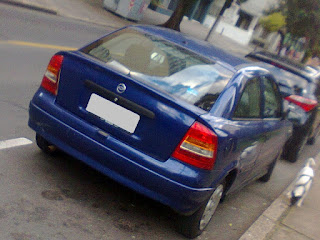Once a popular powerplant for European vehicles, also widely used for other applications such as marine and stationary/industrial, the Perkins 4-108 was a development of the 4-99 engine originally released in '58. Discontinued only in '92, it could eventually be perceived as somewhat archaic by then due to the 3-main-bearing crankshaft and overhead valve layout with a gear-driven camshaft in the block, even though it could still fare reasonably compared to modern overhead-camshaft rivals with a 5-bearing crankshaft which started to appear in the '70s. At least 5 vehicles which were highly successful in the '90s and fitted with some OHC engine for their Diesel versions would actually be not bad with the seemingly-outdated Perkins.
1 - Suzuki Vitara: even though it was launched in the late-'80s, the 1st-generation Suzuki Vitara was highly successful through its production run which spanned until '98. Diesel engines from Peugeot and Mazda were available on selected markets, including Spain where it used to be locally assembled by Santana Motor in order to circumvent import quotas on Japanese-made vehicles. Considering the Perkins 4-108 used to be also made in Spain by Motor Ibérica under license, it seems quite surprising this engine which was already well-proven didn't get a chance to have its value highlighted in what was then a modern compact SUV;
2 - Fiat Brava: one of those models which served as a billboard to highlight the transition from the indirect injection and natural aspiration on light-duty Diesel engines to the turbocharged common-rail layout which is now widespread, such situation might seem to justify views that a Perkins 4-108 would still be suitable. Since the naturally-aspirated engine with indirect injection featured on the Fiat Brava was basically a makeshift based on an older gasoline-powered engine series, unlike the newer turbocharged ones which were developed as part of a modular series providing for both gasoline and Diesel versions since day one, outsourcing from Perkins for the simpler trims wouldn't be so bad at all;
3 - early Fiat Palio: originally released in Brazil and Argentina in '96, the Palio had some Diesel and turbodiesel engine options developed in-house by Fiat. However, since its assembly in Morocco was performed by Somaca and in South Africa it was built by the local branch of Nissan under contract, it could sound as a good excuse for an engine outsourcing;
4 - Ford Escort Mk.5: considering the Brazilian versions relied on a 1.6L derivative of the Renault Cléon-Fonte engine and on the 1.8L and 2.0L variants of the Volkswagen EA827 for higher trims, it would not really surprise me if Ford approached Perkins for some improved version of the 4-108 in order to keep it up with the same emission standards its troublesome Endura-D engine had to withstand. The gear-driven camshaft and injector pump of the old Perkins were so much better to deal with than the combination of a duplex chain-driven injector pump and a belt-driven camshaft of the Endura-D;
5 - Opel Astra B: even though the Isuzu engines featured on this model were praised as bulletproof, it's undeniable the Perkins 4-108 was suitable to some rough operating conditions which would have made it feel at home on certain regional export markets supplied by the Brazilian production of the model rebadged as Chevrolet Astra.










No comments:
Post a Comment
Only comments written in English are published. Not so rigid about the grammar, but some regional slang should be avoided to make it clear and easily understandable.